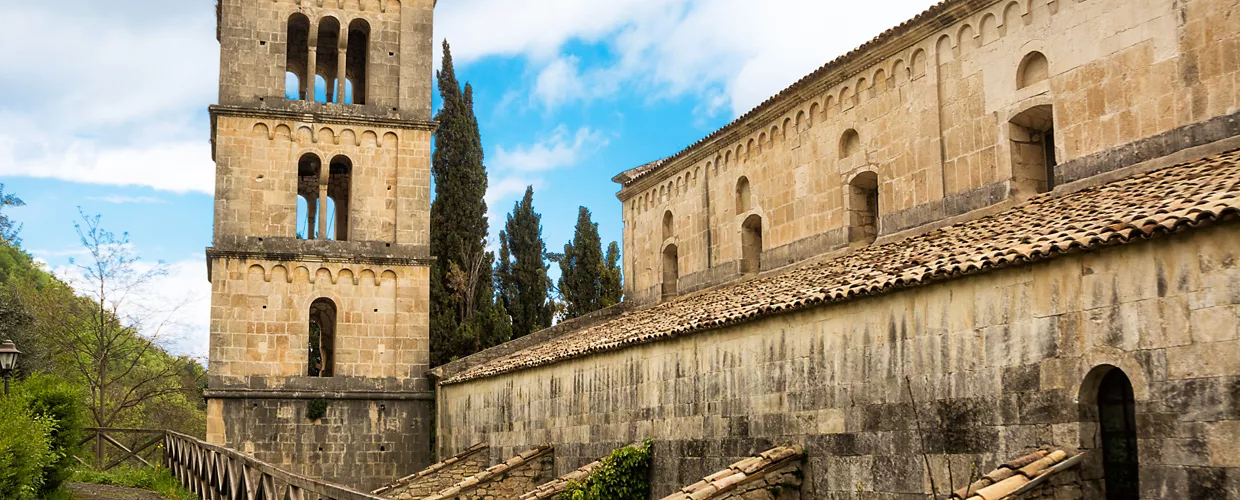This content was automatically translated. View the original text.


Overview
The abbey marks the end of the Cammino Classico di Celestino. It is one of the most important examples of Romanesque architecture in Abruzzo. The foundation of the Benedictine monastery is linked to many legends. One of the oldest tells of two Roman patricians who donated land to Saint Benedict to build the settlement. Another states that the complex was built by Charlemagne following his victory against the Lombard forces in 781. The historical record tells us that there was already a community of monks in the Chieti area of Abruzzo in 888, as attested by the Memoratorium of Abbot Bertharius on the property of Monte Cassino.
In 990, an earthquake almost completely destroyed the monastery, but thanks to the involvement of Abbot Theobald, appointed in 1007, restoration and extension work began. The election of Desiderius as Abbot of Monte Cassino in 1058 gave rise to several centuries of disputes over the monastery's property. In the 19th century, the building appeared to be in a state of abandonment, but in 1958-59 and the years that followed, renovations began to restore its original appearance, which had unfortunately been marred by works of questionable quality.
The church, which survives along with the monastery bell tower, features a gabled façade with three doorways dating back to the work of Abbot Desiderius (11th century) and the Angevin period. The rear of the church is embellished with three apses. The three-nave interior is minimalist, with a wooden truss ceiling and aisles with classically inspired capitals. Among other things, it houses a Cosmatesque mosaic from 1275 and the beautiful ambo reconstructed with 12th-century bas-reliefs.